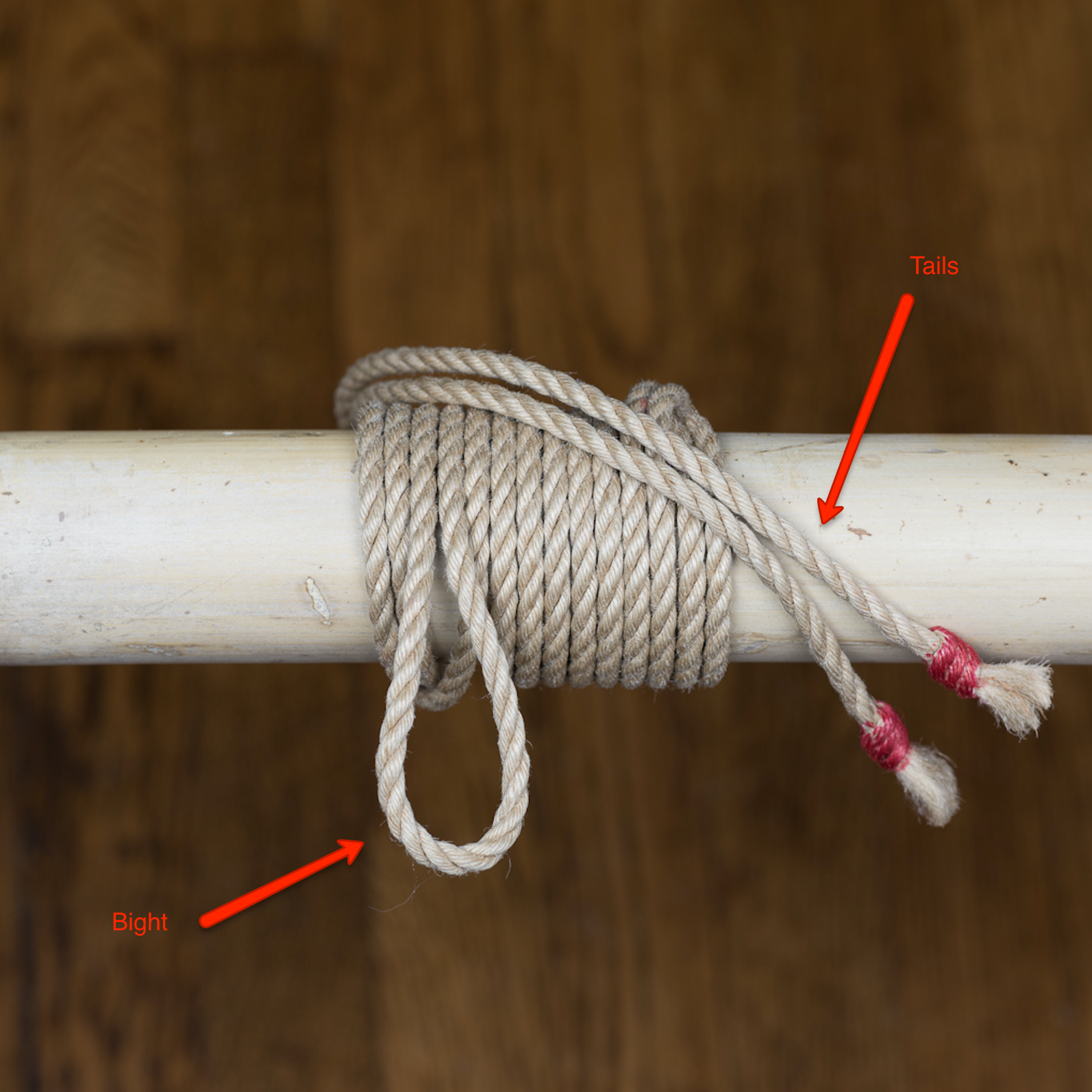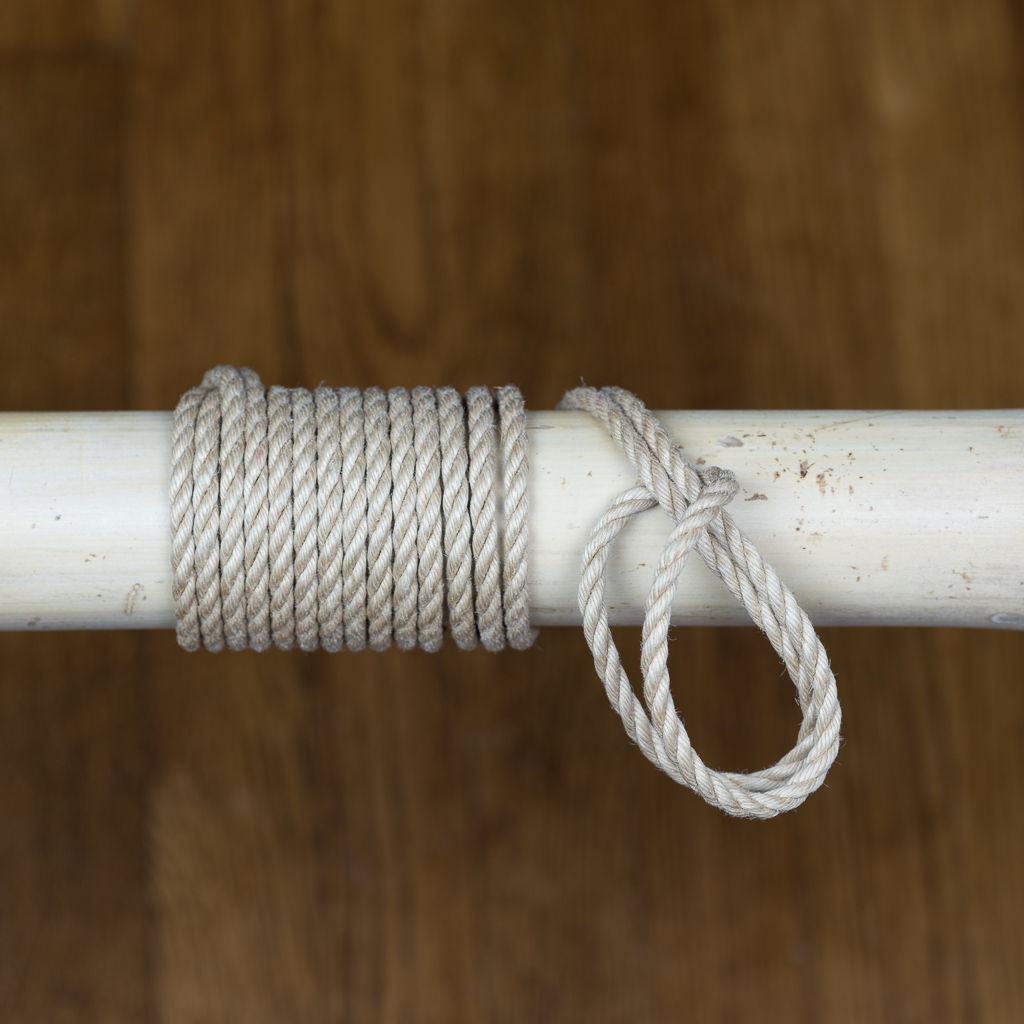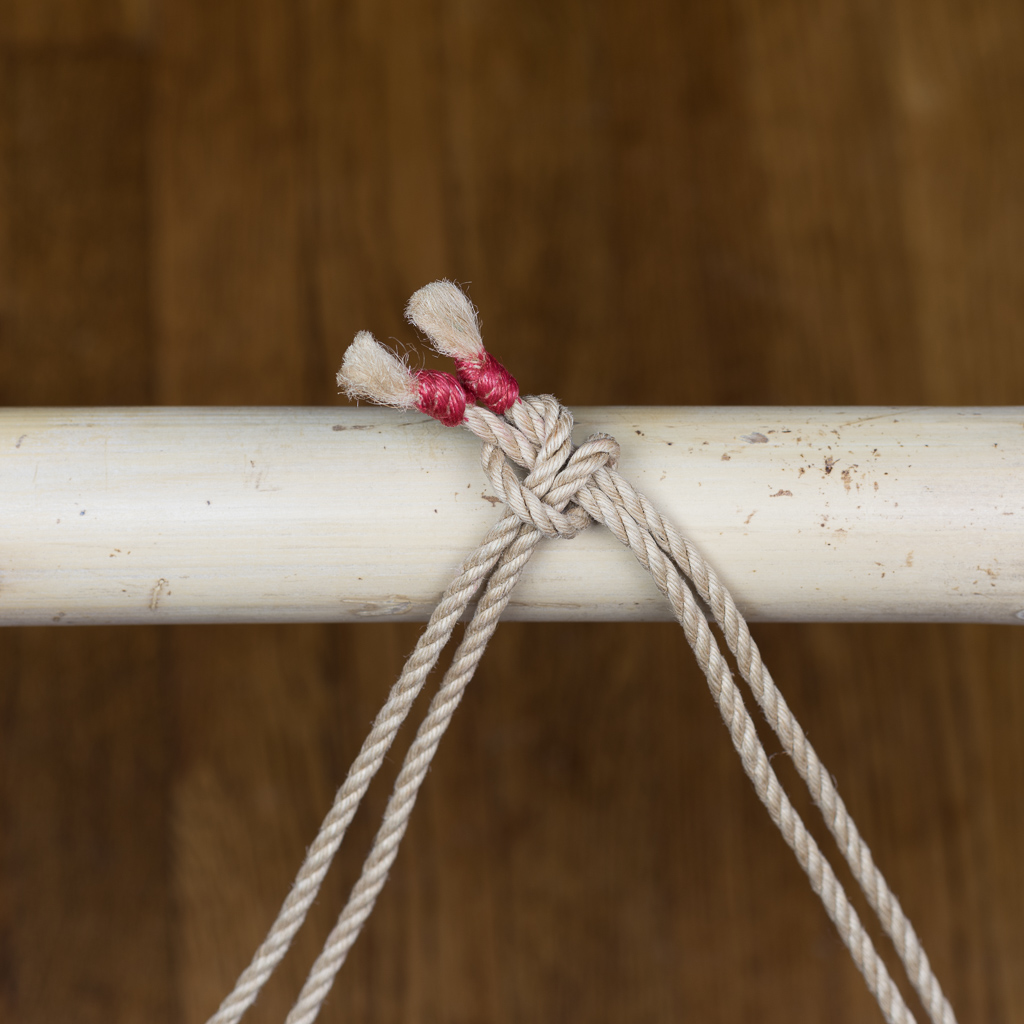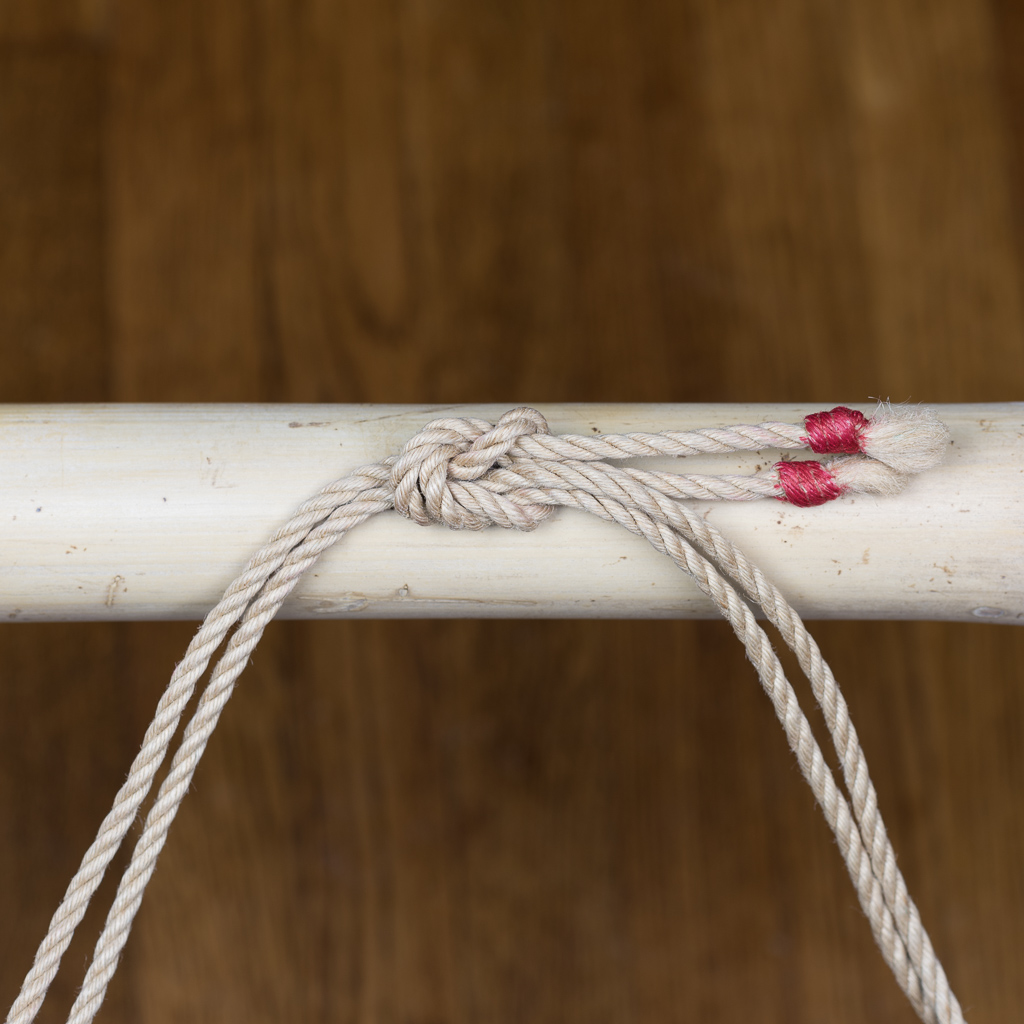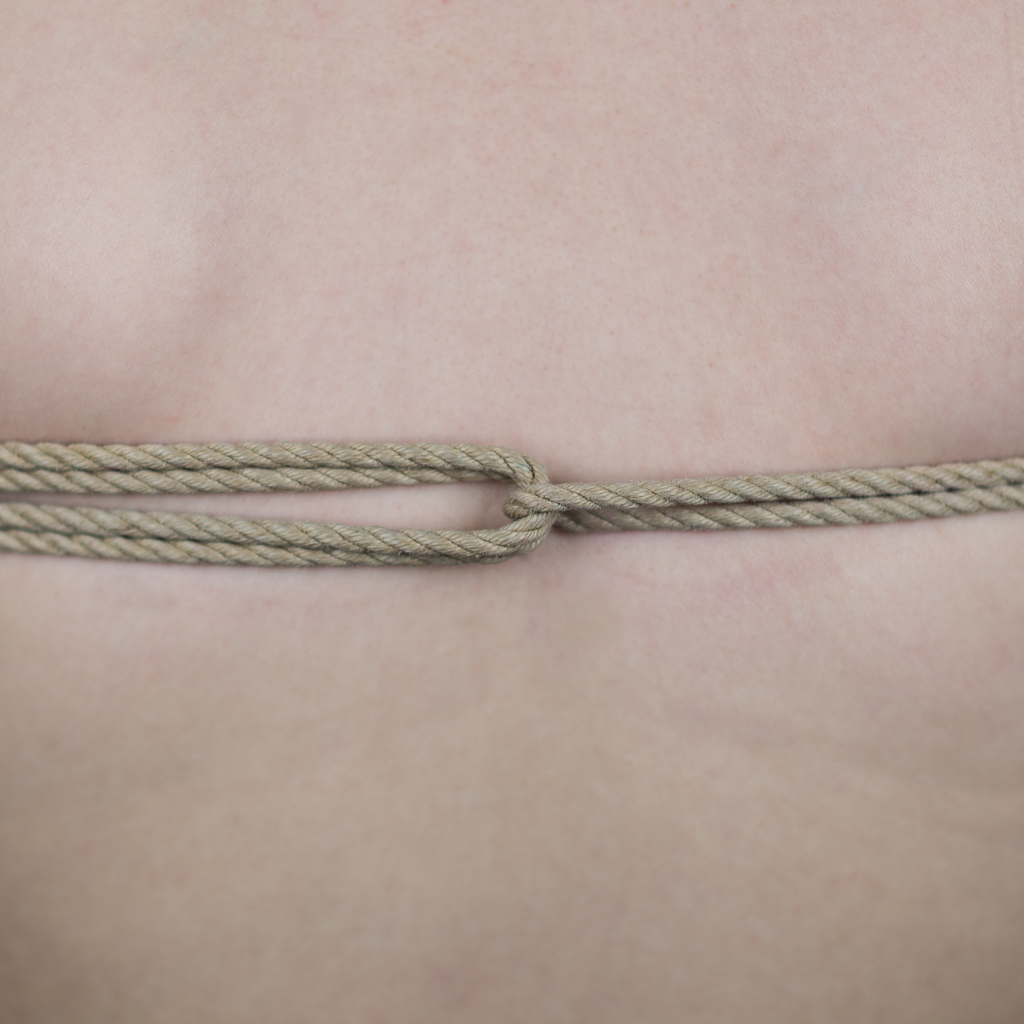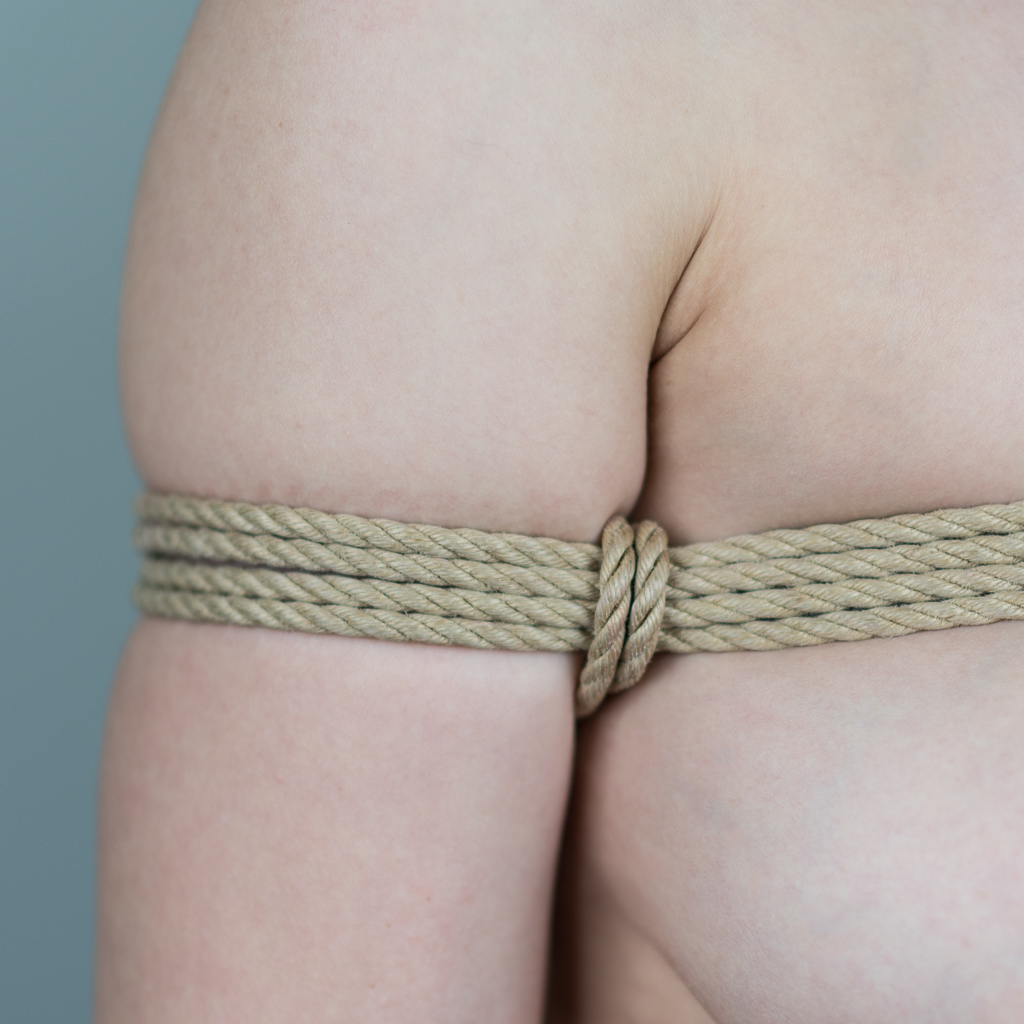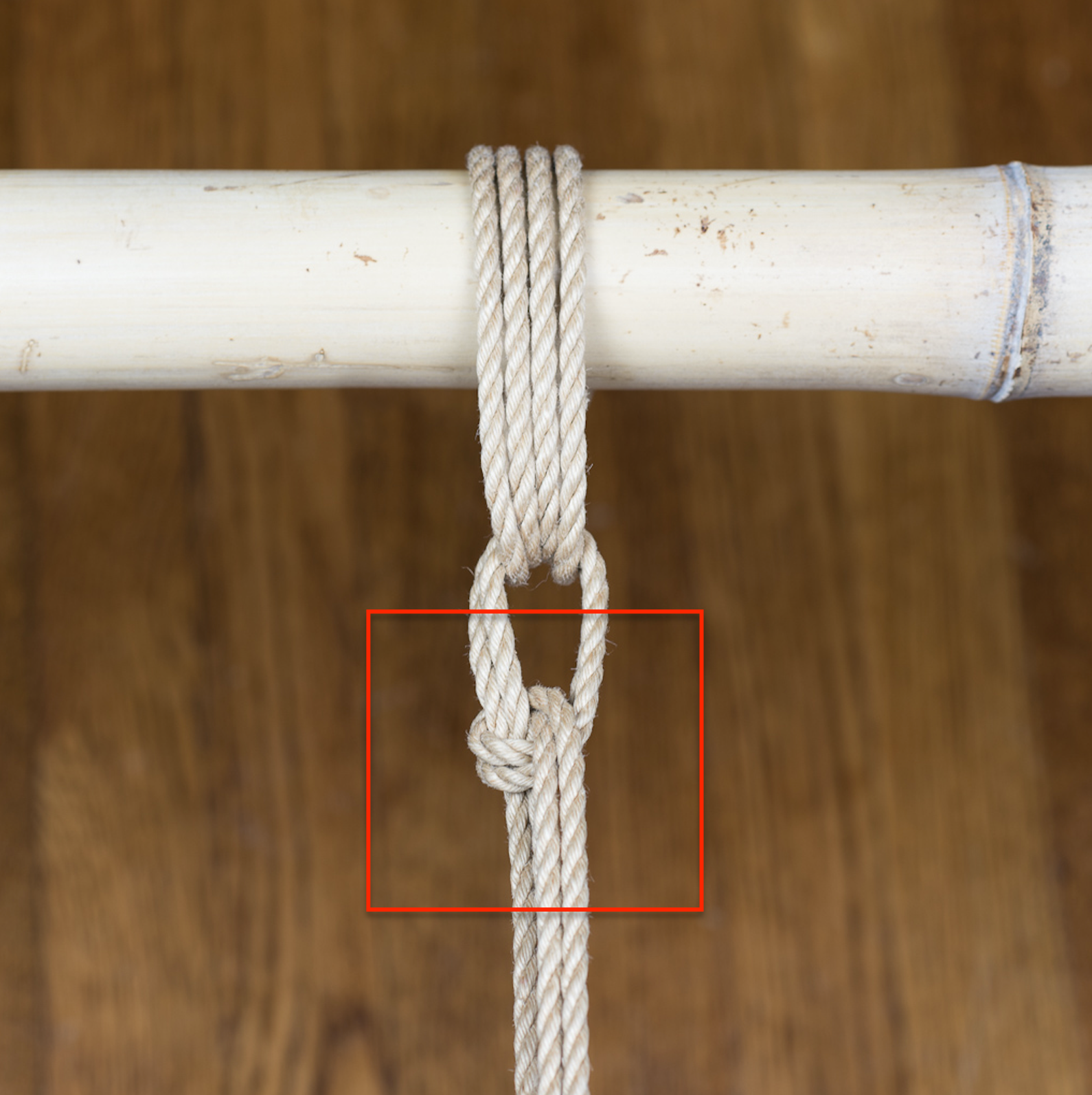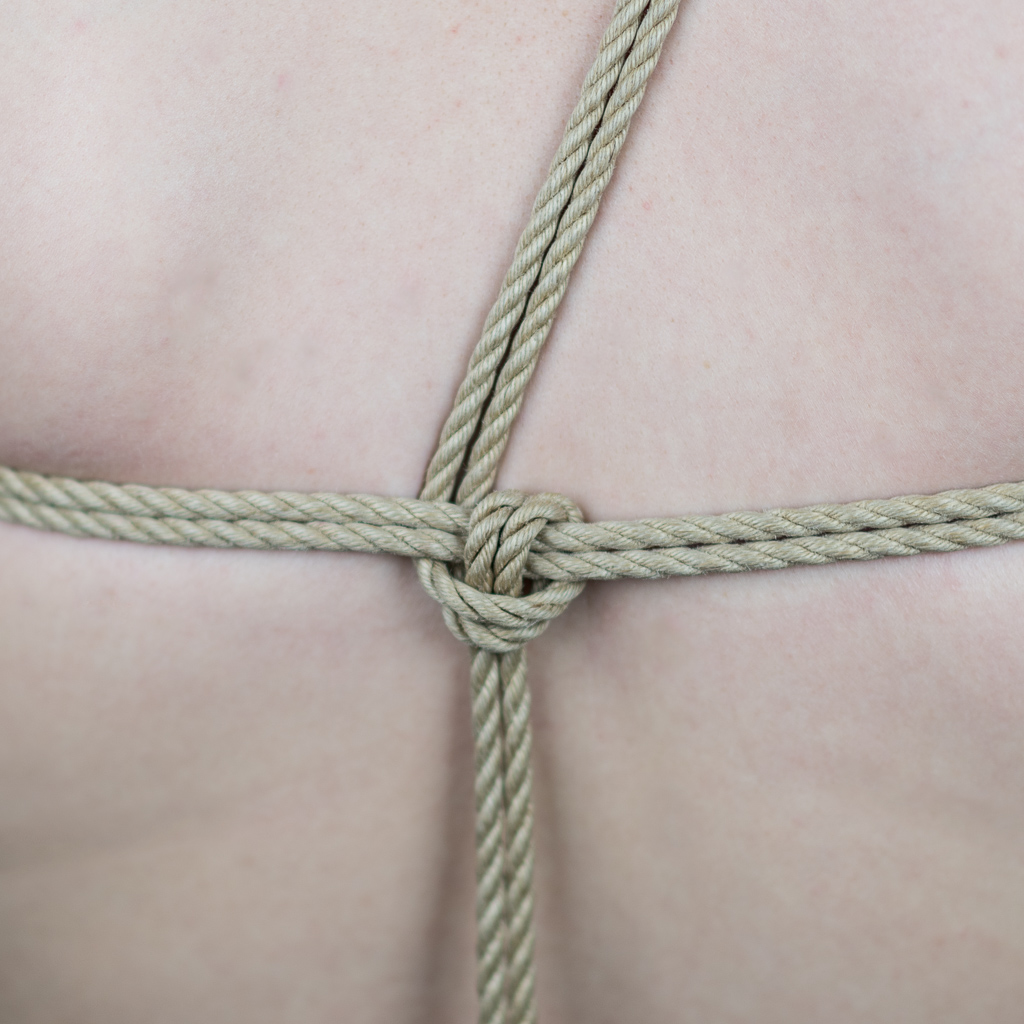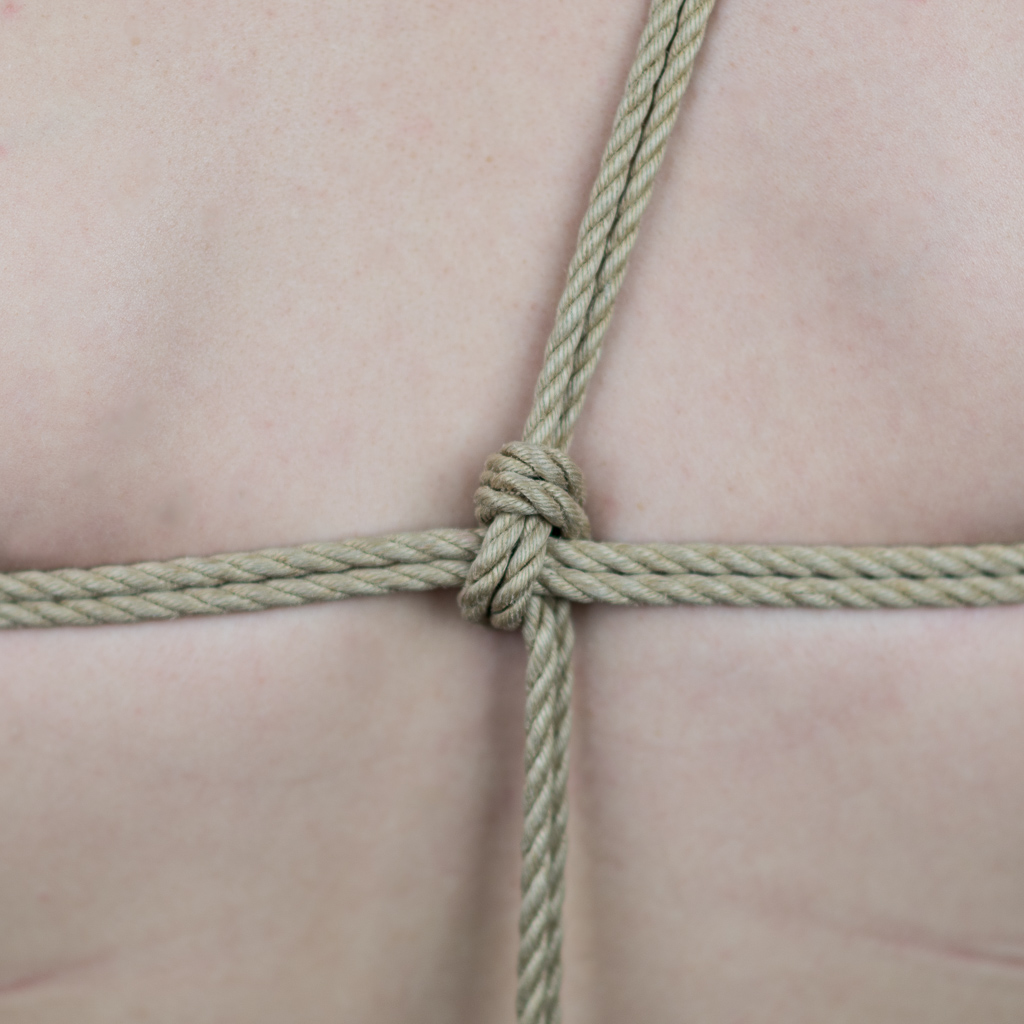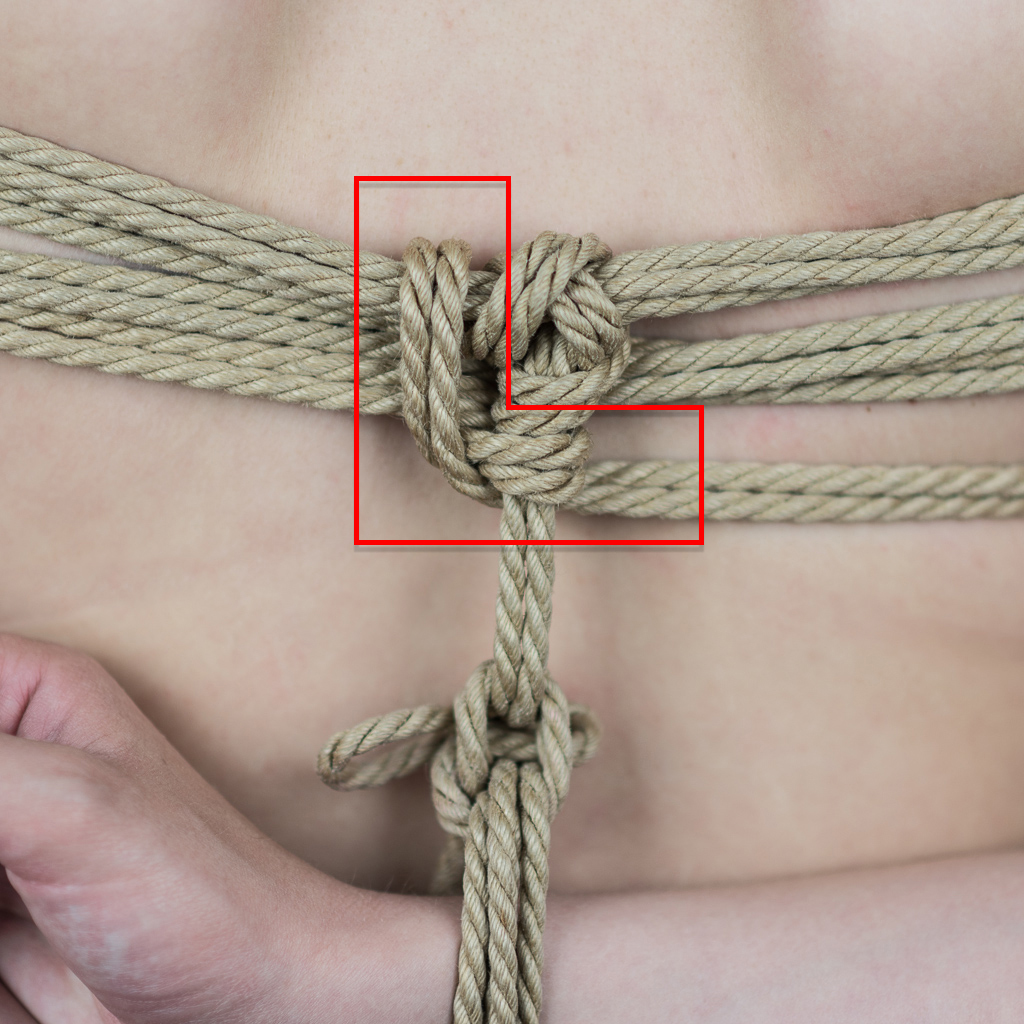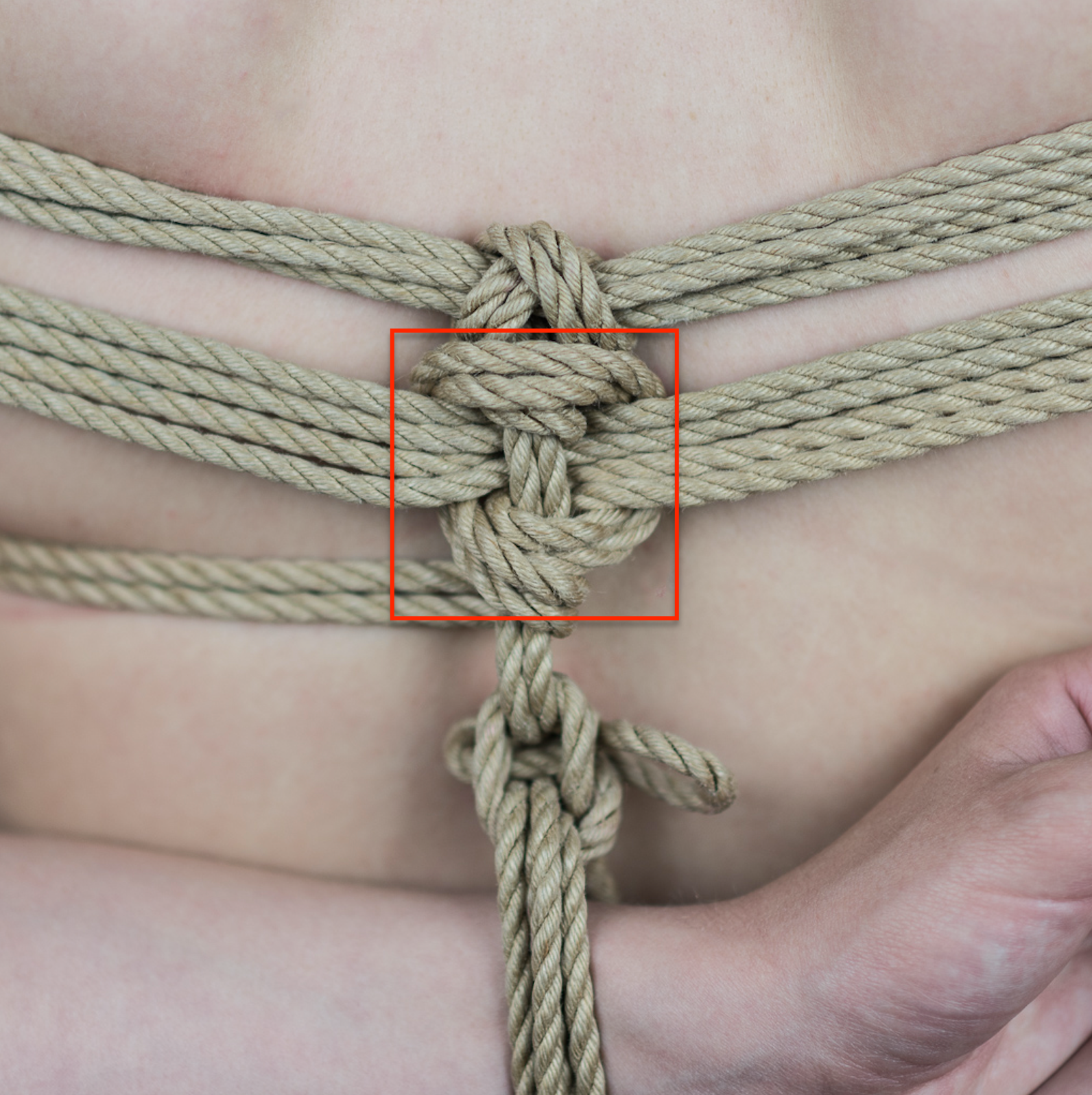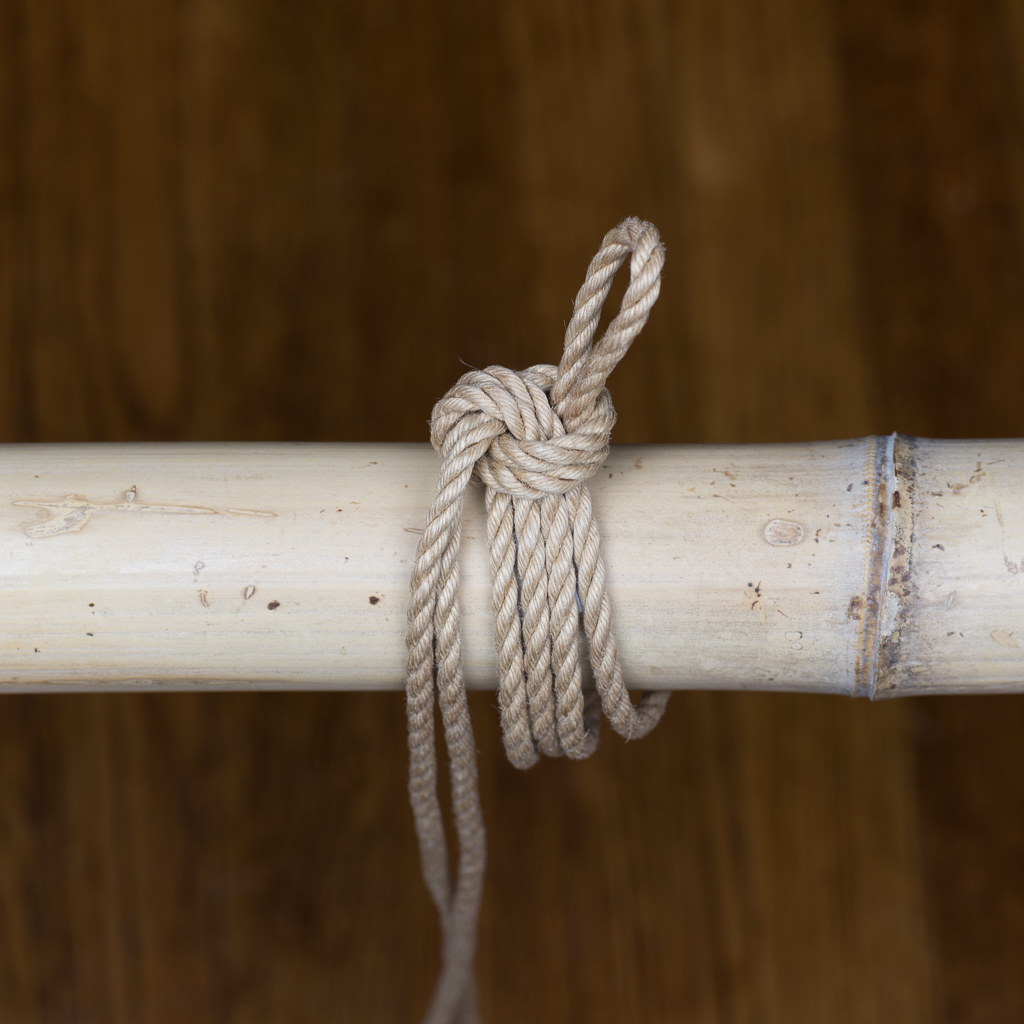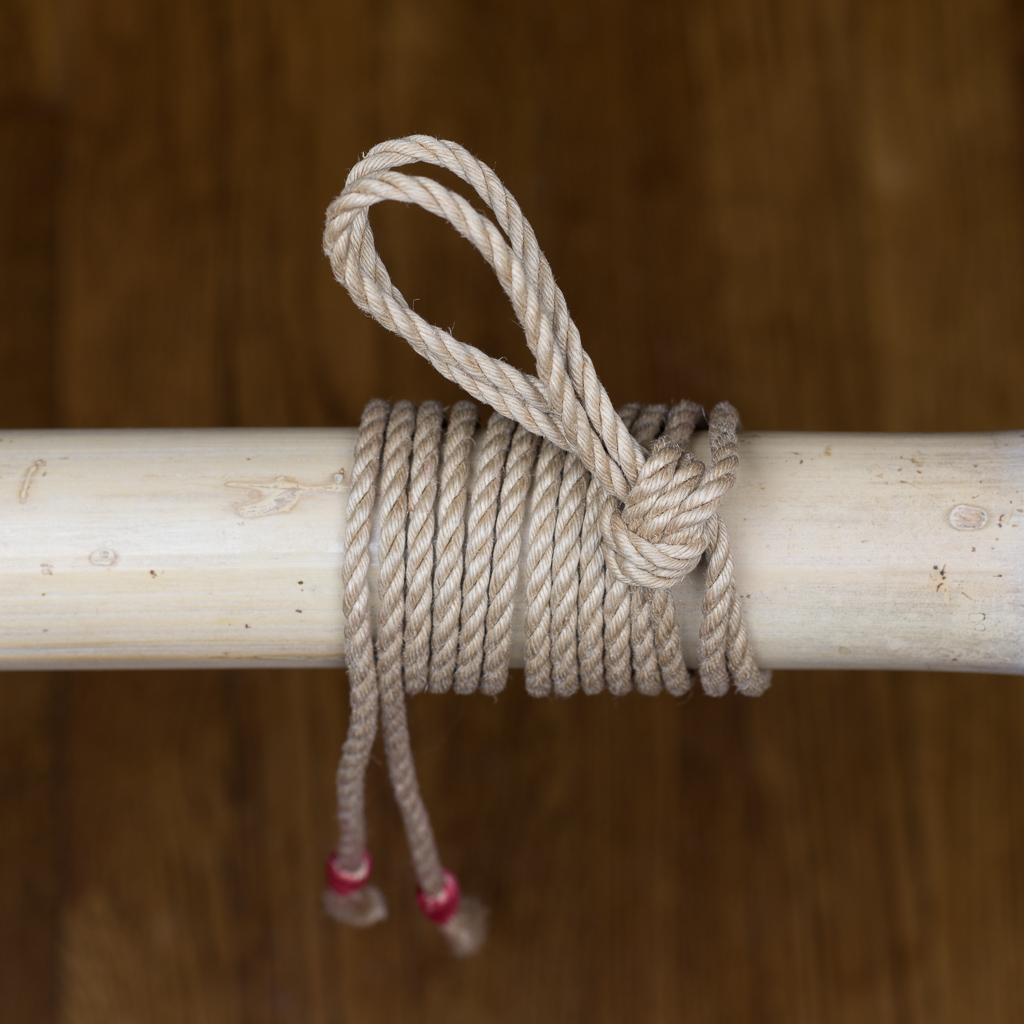Some Common Knots & Frictions
Below is a collection of some of the more common knots and frictions you’ll encounter in rope bondage that follows the Japanese style. We hope this will serve as a glossary of terms and a handy reference.
General Terms
Bight 縄頭 (nawagashira) and Tails 縄尻 (nawajiri)
“Bight” typically refers to the midpoint of the rope when folded in half. However, note that a “bight” is really any full bend in the rope, so you can create a bight at any location in the rope.
Lark’s Head
… for extending rope
… flipped lark’s head
Reverse Tension
Cinch 閂 (kannuki)
Inline Cuff / Hojo Cuff
Friction 留め縄 (tomenawa)
Turn / Direction Change
Half-Hitch 竹止め (takedome)
Munter Hitch の止め (nodome)
Reverse Munter Hitch うらの止め (uranodome)
Upside-Down Munter
X-Friction
L-Friction
Half-Moon Friction
Knot 結び目 (musubime)
Square Knot / Reef Knot 本 結び (hon musubi)
Japanese-style rope bondage uses very few knots, and it could be argued that this is the only “true knot” traditionally used. You’ll sometimes hear this referred to as a “boola boola” knot (a term coined in jest by Numinous in 2002) or a “yuki” knot (in deference to Yukimura Haruki). The direction that the standing end of the rope is flipped determines whether the resulting knot is technically a reef knot or a granny knot (see variants and discussion here).
Somerville Bowline
This knot is typically attributed to Topologist, and the name certainly comes from him. Esinem has speculated that there is a Japanese legacy behind this knot, found in the “fence knot” or otoko musubi (男結び). Regardless of origin, its compact nature and sturdy construction have made it a popular choice for securing cuffs.
Hojo Quick Tie (half-hitch on a bight)
Also see: Knots Terminology
